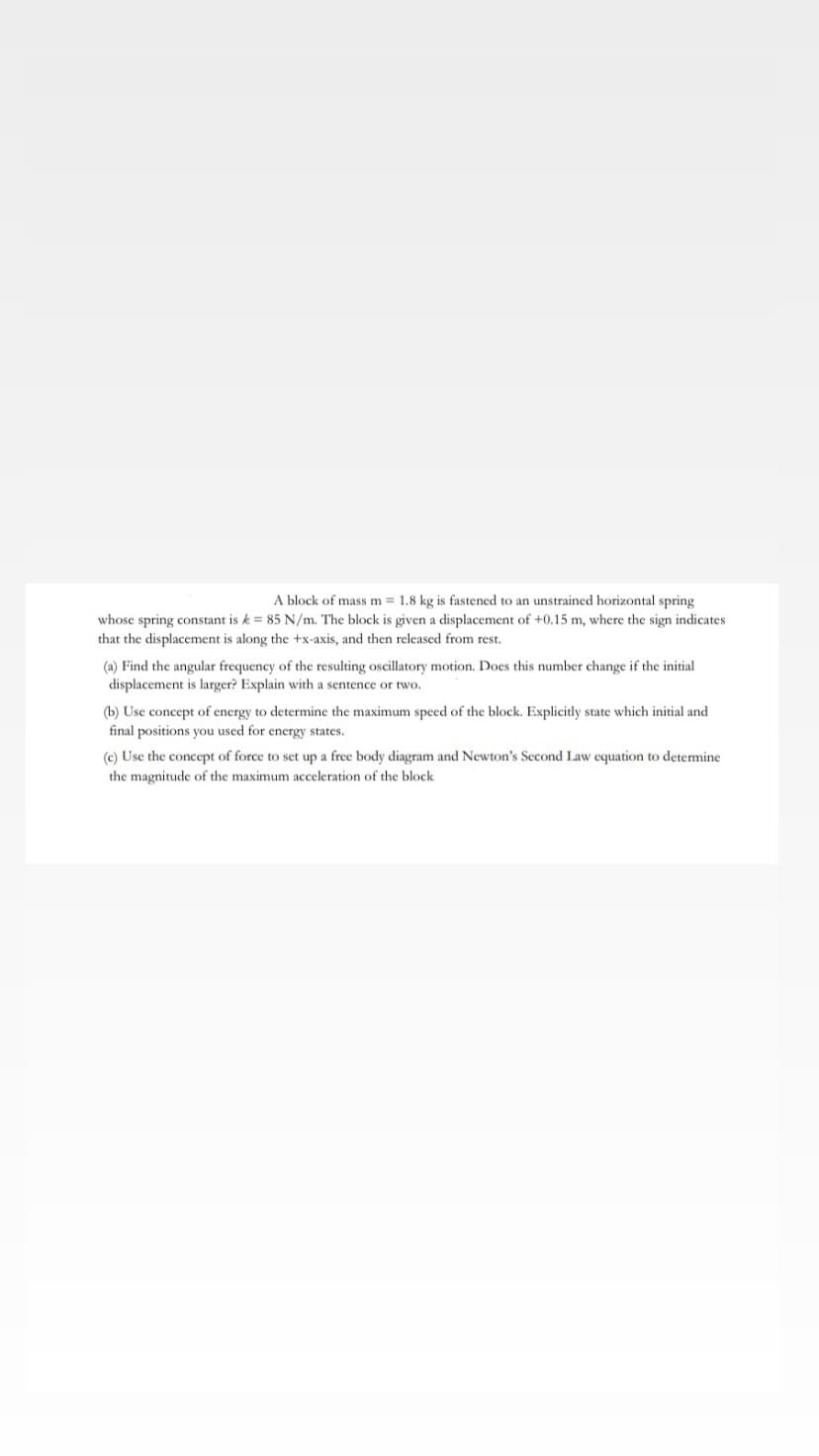A block of mass m = 1.8 kg is fastened to an unstrained horizontal spring whose spring constant is k = 85 N/m. The block is given a displacement of +0.15 m, where the sign indicates that the displacement is along the +x-axis, and then released from rest. (a) Find the angular frequency of the resulting oscillatory motion. Does this number change if the initial displacement is larger? Explain with a sentence or two. (b) Use concept of energy to determine the maximum speed of the block. Explicitly state which initial and final positions you used for energy states. (c) Use the concept of force to set up a free body diagram and Newton's Second Law equation to determine the magnitude of the maximum acceleration of the block
Simple harmonic motion
Simple harmonic motion is a type of periodic motion in which an object undergoes oscillatory motion. The restoring force exerted by the object exhibiting SHM is proportional to the displacement from the equilibrium position. The force is directed towards the mean position. We see many examples of SHM around us, common ones are the motion of a pendulum, spring and vibration of strings in musical instruments, and so on.
Simple Pendulum
A simple pendulum comprises a heavy mass (called bob) attached to one end of the weightless and flexible string.
Oscillation
In Physics, oscillation means a repetitive motion that happens in a variation with respect to time. There is usually a central value, where the object would be at rest. Additionally, there are two or more positions between which the repetitive motion takes place. In mathematics, oscillations can also be described as vibrations. The most common examples of oscillation that is seen in daily lives include the alternating current (AC) or the motion of a moving pendulum.

Trending now
This is a popular solution!
Step by step
Solved in 2 steps with 4 images









